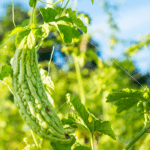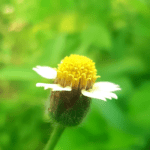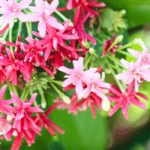Comprehensive Guide to Growing and Caring for the Devil’s Backbone Plant (Pedilanthus Tithymaloides) – An Introduction
Welcome to our comprehensive guide on growing and caring for the Devil’s Backbone Plant, also known as Pedilanthus Tithymaloides (Pedilanthus Plant) or the Zig Zag Plant. Are you ready to embark on a fascinating journey into the world of this unique and captivating plant species? We will explore the intricacies of Devil’s Backbone Plant care, providing you with in-depth knowledge, practical tips, and expert insights to ensure your success in cultivating and nurturing this remarkable plant.

What is the Pedilanthus Plant?
The Devil’s Backbone Plant, scientifically known as Pedilanthus Tithymaloides, is a member of the Euphorbiaceae family. Its intriguing common name, “Devil’s Backbone or simply Pedilanthus Plant,” refers to the zigzag pattern of its stems, resembling a backbone, while the name “Zig Zag Plant” highlights its captivating leaf arrangement. Native to Mexico and Central America, this plant has gained popularity worldwide for its unique appearance and adaptability.
Importance and Popularity of the Pedilanthus Plant
The Pedilanthus Plant or Devil’s Backbone Plant holds a significant place in the hearts of gardening enthusiasts and plant collectors. Its distinctive architectural structure, vibrant foliage, and adaptability to various conditions make it a sought-after addition to any garden or indoor space. The popularity of the Devil’s Backbone Plant can be attributed to its low maintenance requirements and its ability to thrive in diverse environments, both indoors and outdoors.
Overview of Devil’s Backbone Plant Varieties
The Devil’s Backbone Plant encompasses a range of cultivars and varieties, each showcasing its unique features and characteristics. This plant, native to subtropical regions of North and Central America, offers a variety of types that add uniqueness to any indoor or outdoor space.
Some notable varieties include Jacob’s Ladder, known for its ladder-like leaf pattern and cup-shaped flowers; the ZigZag Plant, with its succulent zigzag stems and striking slipper-shaped red flowers; and the Redbird Cactus Flower, which showcases bird-like structures below its blooms. Other types, such as the Slipper Plant, Wild Poinsettia, Devil’s Ribcage Plant, and Japanese Poinsettia, offer their own unique characteristics and visual appeal.
Additionally, the Devil’s Backbone Plant has botanical cousins worth exploring. These include the Crown of Thorns (Euphorbia Milii), a stunning succulent with colorful bracts; the African Milk Tree, known for its exotic appearance and tear-shaped leaves; and the Pencil Cactus, featuring thick clusters of stems and oval leaves. While each variety and cousin brings its own charm, it’s important to note that the Pencil Cactus is toxic to humans and animals due to its poisonous latex. By considering these various types and their characteristics, gardening enthusiasts can enhance their spaces with the captivating beauty of Devil’s Backbone Plants and their botanical relatives.
How to Successfully Grow the Devil’s Backbone Plant Indoors
The Devil’s Backbone Plant, also known as Pedilanthus tithymaloides, is an attractive and unique houseplant that can thrive in indoor environments. With its striking appearance and relatively low maintenance requirements, it has become a popular choice among plant enthusiasts. If you’re interested in growing and caring for a Devil’s Backbone Plant in your home, follow these simple steps for success.
Choosing and Propagating the Devil’s Backbone Plant
To start your Devil’s Backbone Plant journey, select a healthy specimen of Pedilanthus tithymaloides. Look for a plant with well-developed stems and vibrant foliage. If you already have a Devil’s Backbone Plant, you can propagate it easily through stem cuttings.
- Take a 4 to 6 inch (10-15 cm) section of the stem from the parent plant.
- Allow the cut end to callus for a few days, which helps prevent rotting.
- Fill a pot with perlite and lightly moisten it.
- Insert the stem cutting into the perlite, making sure it is securely positioned.
- Keep the perlite lightly moist until the stems root, which usually takes a few weeks.
- Once the roots have developed, repot the new plants into a well-draining houseplant potting soil.
Ideal Growing Conditions for the Pedilanthus Plant (Devil’s Backbone Plant) Indoors
To ensure the health and vitality of your Devil’s Backbone Plant, provide it with the following optimal growing conditions:

Light: The Devil’s Backbone Plant thrives in bright indirect sunlight. Place it near a window with filtered light or provide artificial lighting if natural light is limited.
Watering: Allow the top few inches (8 cm) of soil to dry out between waterings. Avoid overwatering, as this plant prefers moderate moisture levels. It’s better to underwater slightly than to saturate the soil.
Fertilization: Feed your Devil’s Backbone Plant once a month during the active growth period, typically spring and summer. Dilute a balanced houseplant fertilizer solution by half and apply it to the soil. Avoid fertilizing during the dormant seasons of fall and winter.
Temperature: The Devil’s Backbone Plant prefers average room temperatures ranging from 65°F to 75°F (18°C to 24°C). Protect it from cold drafts, which can damage the tips of the growth.
Pruning and Maintenance: Prune any problem branches or stems and lightly trim the plant in late winter to maintain its shape. Repot the plant every three to five years, or as needed, using a well-draining houseplant mix with added sand for improved drainage. Opt for unglazed pots to allow excess moisture to evaporate freely and prevent root damage.
Enjoying the Devil’s Backbone Plant Indoors
As you care for your Devil’s Backbone Plant, you’ll appreciate its unique beauty and striking appearance. Its zigzag stems and lance-shaped leaves create an intriguing focal point in any indoor space. Take the time to observe and appreciate the growth of your Devil’s Backbone Plant as it thrives and adds a touch of nature to your home.
Tips for Indoor Devil’s Backbone Plant Care
Devil’s Backbone Plant Care Guide
Indoor gardening enthusiasts are often drawn to the captivating beauty of the Devil’s Backbone Plant. To ensure the success of your indoor Devil’s Backbone Plant and enjoy its unique features up close, follow these helpful tips for care and maintenance:
Ideal Indoor Lighting for the Devil’s Backbone Plant
The Devil’s Backbone Plant thrives in bright indirect sunlight. Place it near a window that provides filtered light. If natural light is limited, consider using artificial lighting, such as fluorescent or LED grow lights. These can provide the necessary light intensity and spectrum for optimal growth.
Suitable Placement for the Devil’s Backbone Plant
Choose a draft-free location within your home for the Devil’s Backbone Plant. It’s important to avoid cold breezes, as they can damage the plant and cause the tips of the growth to wither. Consider placing the plant away from doors, windows, or ventilation sources that may create drafts.
Watering Techniques for the Devil’s Backbone Plant
Allow the top few inches (8 cm) of soil to dry out before watering the Devil’s Backbone Plant. Insert your finger into the soil to assess its moisture level. When watering, ensure thorough saturation of the soil, allowing excess water to drain out. Avoid overwatering, as it can lead to root rot.
Humidity Preferences for the Devil’s Backbone Plant
The Devil’s Backbone Plant prefers moderate humidity levels. While it can tolerate average indoor humidity, higher humidity levels can promote healthier growth. Increase humidity by placing a tray filled with water near the plant or by using a humidifier. Regularly misting the foliage can also provide a slight humidity boost.
Maintaining Optimal Temperature for the Pedilanthus Plant (Devil’s Backbone Plant)
The Devil’s Backbone Plant thrives in average room temperatures ranging from 65°F to 75°F (18°C to 24°C). Avoid exposing the plant to extreme temperature fluctuations, such as cold drafts or direct heat sources. Maintaining a stable temperature within this range will promote healthy growth and prevent stress.
Soil and Potting Mix
Choosing the right soil type and potting mix is essential for providing the Devil’s Backbone Plant with a conducive growing medium. It thrives in well-draining soil with good aeration. A cactus or succulent potting mix, blended with perlite or pumice, can provide the ideal growing conditions. Ensure that the potting mix allows excess water to drain effectively, preventing waterlogged conditions that can harm the plant’s roots.
Fertilization Guidelines for the Pedilanthus Plant
Supplying the Devil’s Backbone Plant with essential nutrients is crucial for its overall health and vitality. Use a balanced, water-soluble fertilizer formulated for cacti and succulents. You can also use a solid slow release Cactus and Succulent Fertilizer by mixing it with the top layer of the existing potting mix. During the growing season, typically spring and summer, fertilize the plant every two to four weeks. Dilute the fertilizer according to the manufacturer’s instructions and apply it to moist soil to avoid burning the roots. Reduce or halt fertilization during the dormant period in winter.
Pruning and Maintenance of the Pedilanthus Plant
Regular pruning helps maintain the desired shape and promotes bushier growth. Trim any problem branches or stems, and lightly prune the plant in late winter to encourage fresh growth. Repot the Devil’s Backbone Plant every three to five years, or as needed, using a well-draining houseplant potting mix.
By following these tips for indoor Devil’s Backbone Plant care, you can create an optimal environment that allows this captivating plant to thrive and beautify your indoor space. Enjoy the unique features and striking appearance of the Devil’s Backbone Plant as you nurture it in your home!
Remember, with proper care and attention, your Devil’s Backbone Plant will reward you with its captivating presence and fascinating form.

Common Pests and Diseases that affect Pedilanthus Plant
Although the Devil’s Backbone Plant is generally resilient, it can still fall prey to common pests and diseases. Keep an eye out for pests like mealybugs, spider mites, and scale insects, which may infest the plant. Additionally, watch for signs of diseases such as leaf spot or fungal infections. Early detection and prompt treatment are essential to prevent the spread of pests and diseases and maintain the plant’s health.
How to Use Pedilanthus Plant
Beyond its ornamental value, the Devil’s Backbone Plant holds significance in medicinal and traditional practices. It has been utilized for its therapeutic properties and has a rich cultural history associated with it. Additionally, this captivating plant serves as an excellent choice for decorative purposes, adding a unique and intriguing touch to indoor and outdoor spaces.
Conclusion
Congratulations on completing our comprehensive guide to growing and caring for the Devil’s Backbone Plant. We hope this in-depth article has equipped you with the knowledge, practical tips, and expert insights necessary to cultivate and nurture this captivating species. By following the guidelines presented here, you can create a thriving and visually stunning Devil’s Backbone Plant that will captivate and delight both you and your guests. Remember to adapt the provided instructions to your specific conditions and embrace the journey of nurturing this unique plant. Happy gardening!







